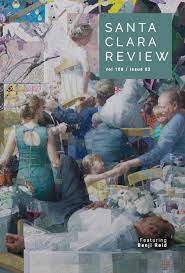|
Color's crucial to poetry. But as much as you might want to use words like "azure," or "verdant," or "purpurean" or even plain old: "blue," "green," or "purple," your readers (and editors) are eye-thirsty for new rainbows. And they want shiny words for every color. In every new poem. "Impossible!" you say. Nope. Not even the least bit difficult if you use this trick. And not only is this trick easy; it's fun. To get the rest of this tip, click the link below! Categories All
2 Comments
Eric Brooks
1/7/2022 04:43:56 pm
Edifying essay. Advice on describing color, spreading out in the mind, like sunlight after it flows through the prism of a Roma's eye..
Reply
Dan Blackston
1/7/2022 04:46:14 pm
Thanks so much! Nice use of the tip, btw!
Reply
Your comment will be posted after it is approved.
Leave a Reply. |


